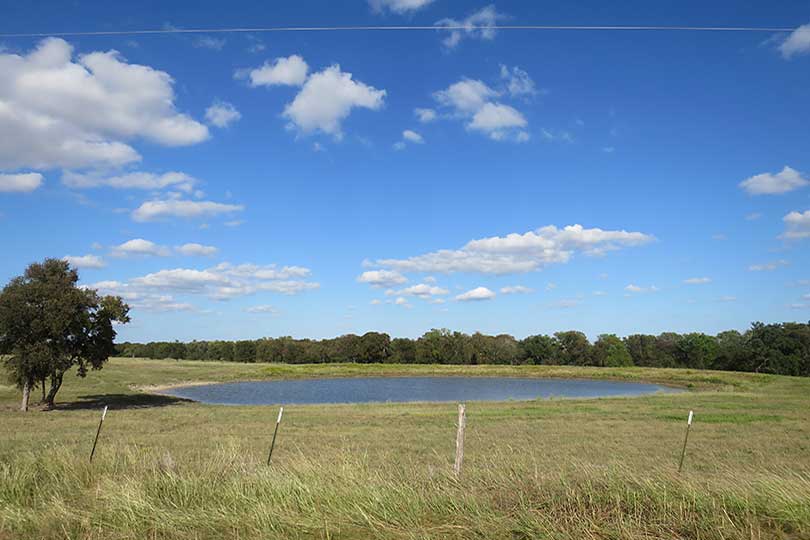As temperatures increase across the state and as summer nears, it’s important for landowners to maintain healthy ponds and fish populations.
Aquatic vegetation growth is the number one problem that concerns Texas pond owners during the growing season, according to Texas A&M AgriLife Extension Service Wildlife and Fisheries Specialist Dr. Billy Higginbotham.
He said there are opportunities during the summer months to improve and protect ponds.
Landowners can implement proper management techniques to control aquatic vegetation, manage fish populations and protect them from oxygen depletion in the upcoming months, according to Higginbotham.
Excessive vegetation can hamper recreational activities such as fishing and swimming. It can also negatively impact livestock watering and irrigation uses of the pond, Higginbotham said.
He notes not necessarily every pond with aquatic vegetation needs to be treated.
“In fact, ponds managed primarily for largemouth bass may benefit from some aquatic vegetation as it provides both habitat and harbors a variety of food sources,” Higginbotham told AgriLife Today. “But, once weed coverage exceeds about one-third of a pond’s surface, the benefits provided begin to decline as too much vegetation may limit the ability of bass to access forage fish present.”
He said the first step for successfully controlling aquatic vegetation is proper species identification. Samples can be submitted to AgriLife Extension county agents or a fisheries biologist for assistance with identification.
Another excellent resource for aquatic weed identification purposes is AgriLife Extension’s aquatic weed website.
“Once summer arrives and water temperatures increase, pond owners should conduct chemical weed control activities with special care if fish are important,” Higginbotham said. “Killing too much vegetation at once can result in decaying matter reducing the oxygen content available for fish and can result in oxygen depletion that could result in fish losses. This is particularly true if algae or submerged moss species are targeted for control.”
Higginbotham also noted pond owners should be aware that the warmer water temperatures during summer decreases the ability of water to hold oxygen. Oxygen depletion could happen even if weed control activities are not conducted.
He said catfish farms raising more than 1,000 pounds of edible-sized catfish per surface acre of water in the ponds during the summer months are more likely to suffer from an oxygen depletion.
“Ponds at or above the 1,000 pound per acre threshold should have a significant portion of the fish crop removed to accommodate expected fish growth during the growing season,” Higginbotham said.
He said good methods to reduce large catfish standing crops in a short period of time are seining, trotlining and the use of fish traps and hoop nets.
He noted that several hot, still cloudy days in a row can also limit oxygen production in the pond via photosynthesis. This can also cause oxygen levels to decline, resulting in fish losses.
“During the summer months, many deep ponds develop water stratification, where a warmer, lighter layer of water is found above a cooler, denser layer of water,” Higginbotham said. “A cold thunderstorm or wind can cool the oxygen-rich upper layer of water to the same temperature of the oxygen-deficient deeper water and the result is a mixing of the two layers.”
He said there are signs pond owners can watch out for, including a sudden lack of fish response to feeding, to indicate low oxygen. A sudden water color change from light green or clearer to brown or black may indicate a phytoplankton die-off and rapid decline in oxygen content.
He recommends pond owners check ponds early in the morning if low oxygen is suspected. Quick action can mean the difference between a pond full of dead fish or a pond full of fishing opportunities, Higginbotham noted.
Running a boat with an outboard motor in a fixed position either against the bank or on a trailer backed into the water can help circulate the water and increase its oxygen content.
He said a pump set where the intake pulls water from near the surface and sprays it back over the pond can also increase oxygen b

